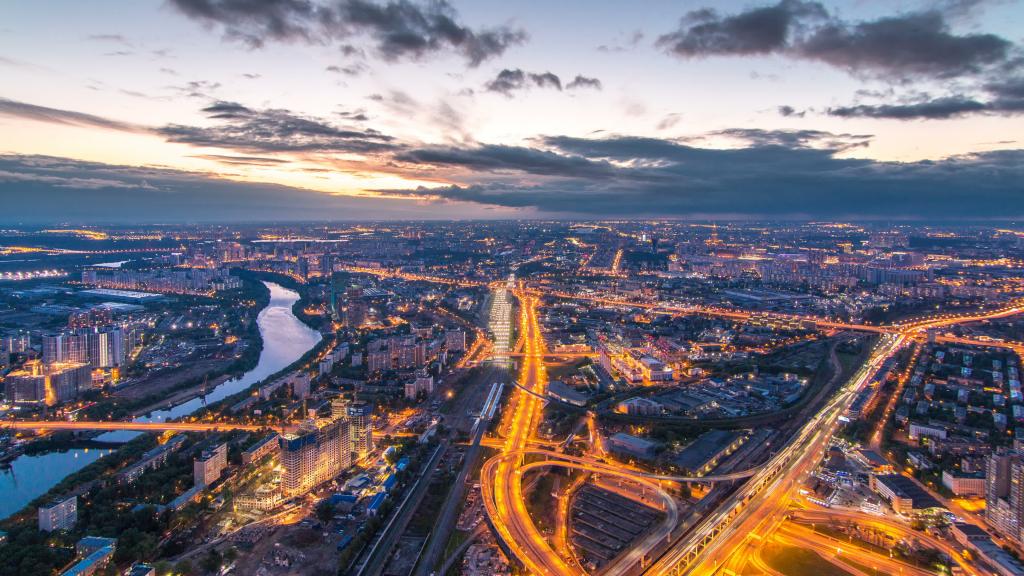In his contribution to the Democray Centre’s commentary series on democratic experiences in the age of pandemics, Michael Goebel, Professor of International History and Faculty Affiliate of the Albert Hirschman Centre on Democracy, argues that there is one mediator between the pandemic and politics that deserves more attention: geography.
In many ways the Coronavirus pandemic is like the French Revolution in Zhou Enlai’s apocryphal comment: too early to tell what will come out of it. But generalized uncertainty has not, and will not, deter the commentariat from speculating about the pandemic’s political fallout for the world’s democracies. The future of right-wing populism in the wake of Covid-19 has attracted particular attention, if sometimes only to say, convincingly, that it is too early to say because there hasn’t been much by way of a globally consistent pattern as yet. As Trump appeared to be flip-flopping, Modi ordered a lockdown, Bolsonaro went into full denialism, and Orbán endeavored to remove the vestiges of Hungary’s democracy. Some of the right-wing populist parties in opposition largely disappeared from the limelight instead occupied by incumbents. This may be about to change, as many countries are seeing growing political disagreements over whether and how to move out of the various kinds of lockdown widely imposed in March. And the long-term political consequences will at any rate be co-articulated with the no more calculable economic aftershocks.
Yet for all the imponderables, there is one mediator between the pandemic and politics that may deserve more attention: geography. The way in which media work, their daily primetime parade of statistics, graphs, and maps, and the preponderance of national policy responses have primed us all into thinking of the pandemic in national containers. But the nation-state is an unwieldy and treacherous entity, not so much because of the truism that the virus knows no boundaries, but because epidemiological and political geographies interrelate in uneven ways.
Virtually all geographic units available for measuring the virus’s spread are political. But of these the national container is among the more deceptive: As of 1–4 May, Lombardy had approximately 78 confirmed cumulative cases per 10,000 inhabitants, while Sicily had less than 7. The canton of Geneva had roughly 100, that of Bern 17. New York City had 213, California 14, Texas 11, and Montana 4. As the epidemic advances, becomes more global, and simultaneously burns through localized hot spots, the national prism that dominated early reporting is becoming even more misleading.
Some of the reasons behind the epidemic’s geography will likely remain cloaked in mystery for many years to come. Even one hundred years after the event, scientists and historians are still discussing and dissenting over some of the reasons behind the behaviour of the flu pandemic of 1918. Then and now, the virus appears to have benefited from the infamous super-spreading events. Some of the specific places where an individual or an event were allowed to spread the virus under the radar of the authorities in the early phase of the pandemic will, with hindsight, inevitably look like pure bad luck— Conversely, others simply had good luck if the virus came relatively late to you and you’ve paid minimal attention to your neighbours’ warnings.
Among the more measurable parameters, population density surely ranks high on the list of factors that deserve scrutiny. Some pundits and epidemiologists have intuitively singled it out as a prime culprit. The New York Times instantly declared density the city’s “big enemy in the coronavirus fight.” That the canton of Geneva had, relative to population, six times as many Covid-19 deaths as Zurich by late April has equally been blamed on population density. Journalistic analyses of Paris focus on the same issue. Risk assessments for Africa likewise home in on density as a key factor. During past epidemics, too, doctors and the public at large have almost always pointed to density and crowded housing conditions. Colonial authorities in British India, for instance, paid special attention to population density in a census they conducted in the wake of the plague epidemic that originated in Hong Kong in 1894. Not without reason, the history of epidemics and urban history are close relatives.
Of course, density alone is not destiny. In the flu pandemic of 1918, population density proved a poor predictor for per capita death rates throughout the United States. For example, New York City, denser than most other U.S. cities already then, emerged relatively unscathed. In Switzerland today, Covid-19 cases or deaths and cantonal population density are not really correlated. Some of the world’s densest and potentially most vulnerable cities today, such as Singapore or Hong Kong, have fared relatively well. Though crowded housing populates today’s headlines on Covid-19 in the hot spots of urban America, such as Chelsea, Massachusetts, the fine print reveals that it is a much wider gamut of living conditions that matter: Who lives in a certain area? What jobs do they have? Can they afford to stay at home? What are a zip code’s patterns of social and family interaction?
Next, there is also a geographic problem at the heart of discussing the importance of population density for epidemic spread: The population density figures of various cities are hard to compare because they depend on the official geographic boundary of these cities. These can be drawn in wildly divergent ways. Finally, there are certain factors of human geography unrelated to residential density that seem important. Whether in Colorado, Tyrol, or the French Alps, skiing areas appear to have a lot to answer for in the current pandemic. Islands, regardless of density, on the contrary seem better off. Although population density has been a common suspect throughout history, its epidemiological guilt has never been unequivocal.
Even so, contagious diseases on the whole have long had an anti-urban bias, and this one does too. As for the epidemic’s consequences, the requirement of social distancing has a different impact on people in cities than on those who live in the countryside. It may therefore recalibrate desirability in the urban-suburban-rural spectrum. A patch of greenery has suddenly become a most cherished good. Some are predicting the death of quintessentially urban institutions, such as the department store. In the longer run, what will the pandemic do to some of the quintessential features of urbanity, associated more with dense cities like Paris or New York than with the suburban sprawl of Los Angeles, such as subways or sidewalk cafés? Does the virus threaten a revival of the post-WWII enamouring with cars?
Epidemiologically cities and transport hubs are special places. Not without reason were late nineteenth-century epidemiologists obsessed with port cities. Today, “Covid-19 death rates remain dramatically higher for urban America,” as the economist Jed Kolko has pointed out. Such an urban concentration of cases can also be found in other countries. And in spite of the virus’s increasing spread in rural areas, this urban bias will probably remain true. Quite apart from density, there is also the issue of timing: Within any given nation-state, for the most part the virus arrived first in cities because their airports are also the major global transportation hubs that spread the virus. By the time national or subnational restrictions on movement came to affect urban and rural areas alike, the former simply had already had more time to travel up the path of exponential growth than the latter.
This is the point where political geographies come in. Epidemiologically, New York state looks like two countries, but politically it is one state. Lockdowns or other restrictive policy measures, and their economic consequences, have a geography that is very different from that of the virus. While the health burden is particularly unevenly spread across space, the economic consequences typically affect entire countries, provinces, or states (in the U.S.), and therefore even people in areas into which the virus has barely progressed. Such a geographic mismatch between experience of the disease and exposure to its economic consequences may well exacerbate the already emerging differences in the acceptance of restrictive public health measures.
The cleavage is particularly dramatic in the United States, where it falls on a deep political polarization that itself overlaps with the rural-urban divide. In the words of political scientist Jonathan Rodden, this situation has led to “a tragic collision of viral spread and political geography.” Public attitudes to the pandemic in the U.S. reveal a shockingly partisan polarization. Covid-19 is already being portrayed as a blue-state disease. In fact, state-level discussion masks that U.S. states’ political preferences in themselves stem from the weight that large metros have within a given state. The Trumpian insurgency against the lockdown surely owes something to these geographies.
The United States are perhaps an especially straightforward example of the problem, but the mismatch between epidemiological and political geographies will surely also play a role elsewhere. A less deep, but nonetheless palpable, division is discernible in Switzerland, where the less affected, rural, and German-speaking cantons, which also have the highest vote share for right-wing populist parties, appear to be more opposed to restrictive measures than the French-speaking cantons. Wherever the rural-urban divide shapes the nature of right-wing populism, human geography will likely play an important role in determining how the pandemic impacts the future of democracies.



